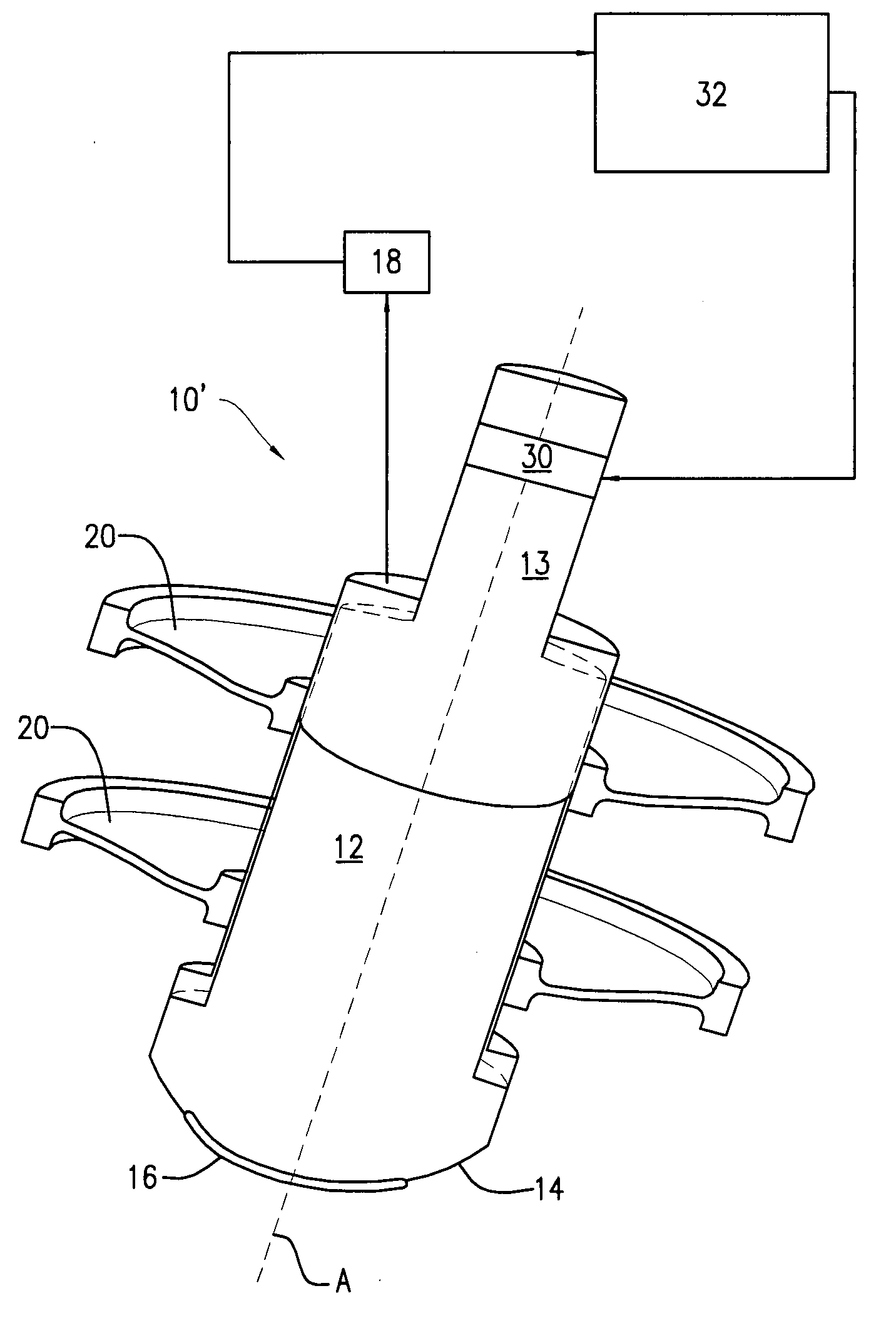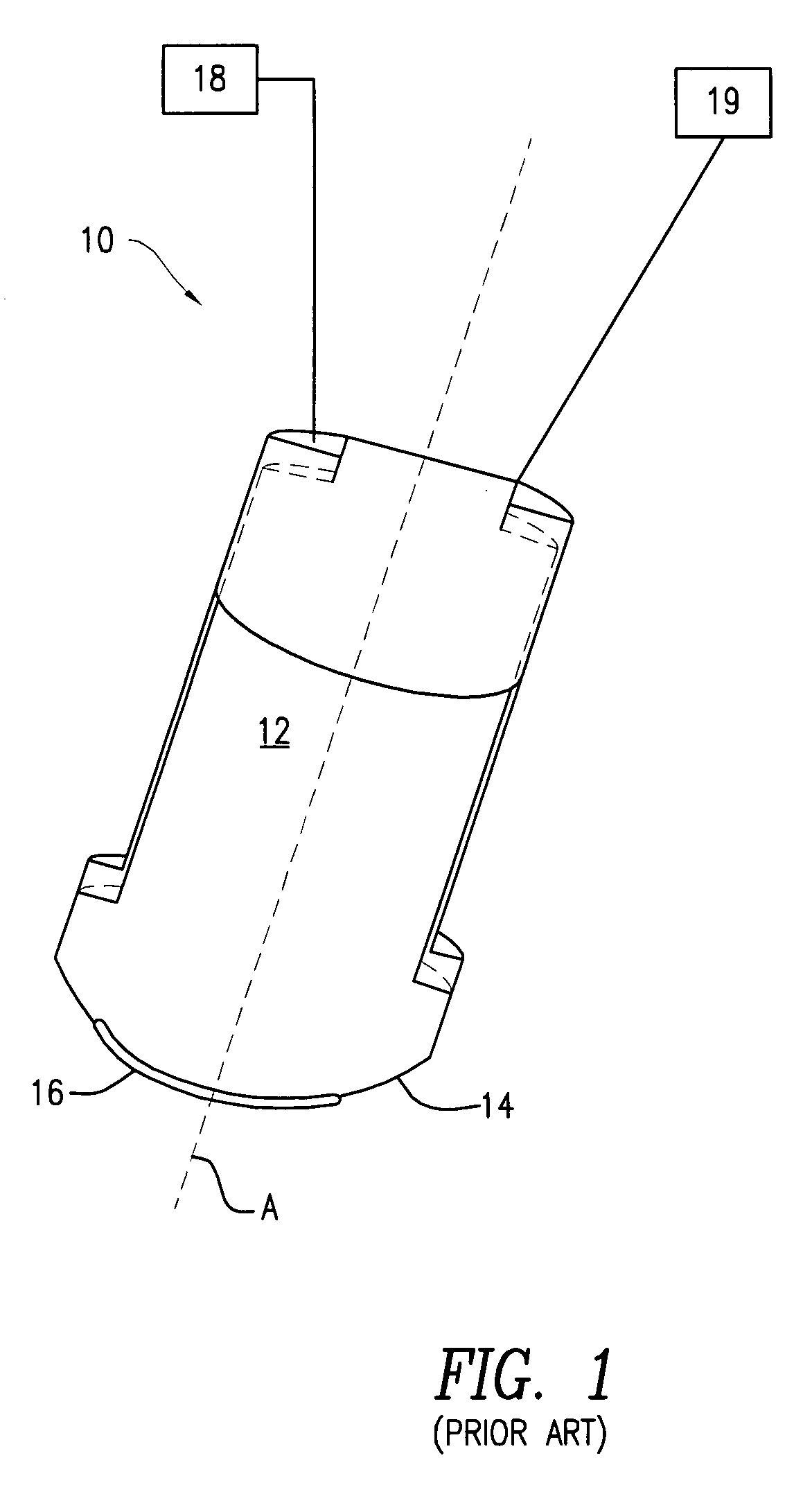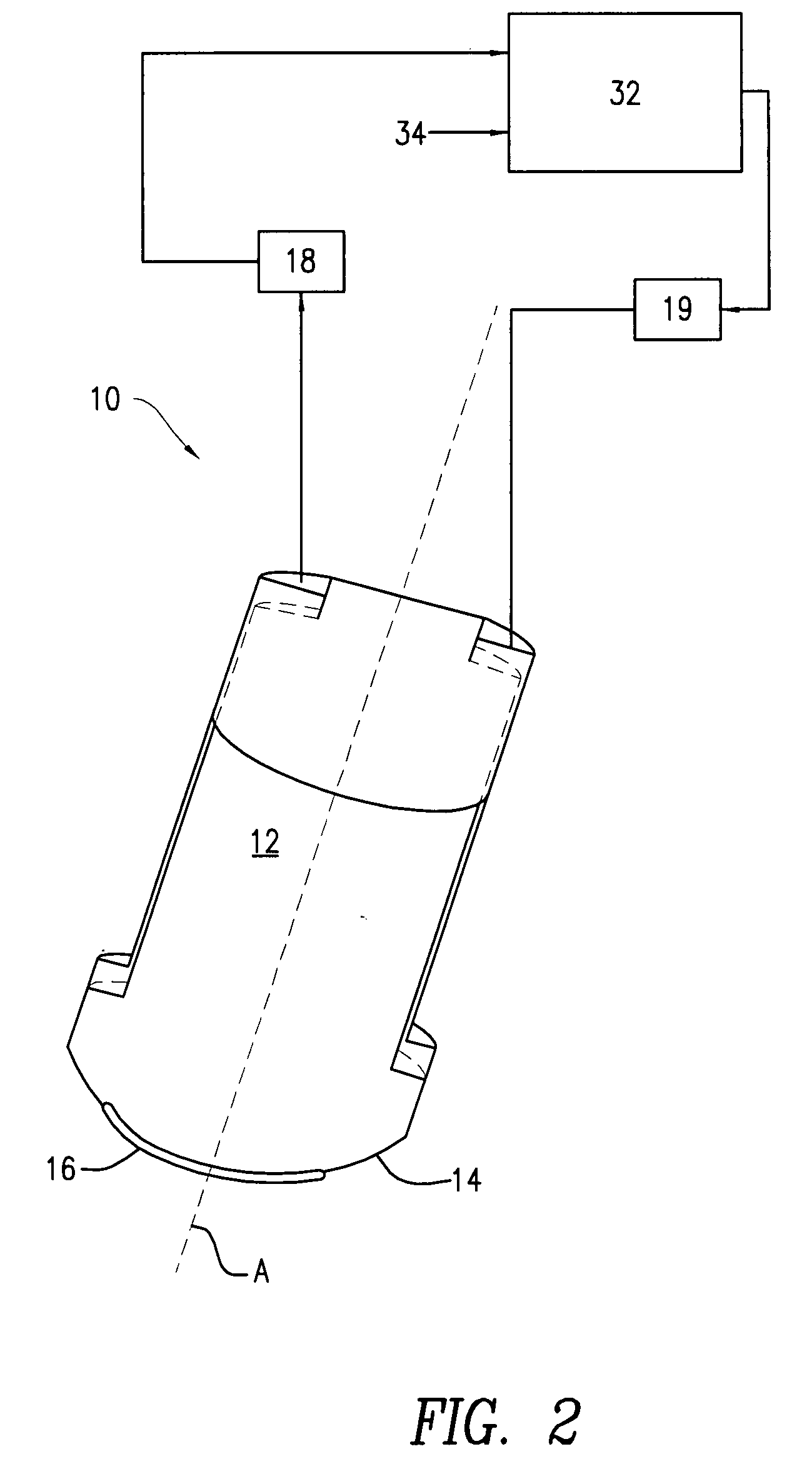Precision abrasive machining of work piece surfaces
a technology for workpiece surfaces and abrasives, applied in the field of machine control, can solve the problems of total film thickness tolerance, film thickness variability of approximately 15 nm, and pressure of the bonnet against the surface, and achieve the effect of reducing spot size variations and producing surface height fluctuations
- Summary
- Abstract
- Description
- Claims
- Application Information
AI Technical Summary
Benefits of technology
Problems solved by technology
Method used
Image
Examples
first embodiment
[0023]FIG. 2 is a schematic / block diagram illustrating a first embodiment in accordance with the present invention. Specifically, there is disclosed a tool 10 as in FIG. 1 in combination with a control subsystem 32, which controls the spacing between tool 10 and the surface of a work piece in relationship to the force between them.
[0024]The work piece may be a silicon-on-insulator (SOI) structure, such as silicon-on-glass (SOG). As used herein, “silicon-on-insulator” or “silicon-on-glass” shall be construed more broadly as including semiconductor materials other than silicon or those including silicon, and it will be understood to embrace insulator materials other than glass. For example, other useful semiconductor materials for practicing the invention include, but are not limited to, silicon germanium (SiGe), silicon carbide (SiC), germanium (Ge), gallium arsenide (GaAs), GaP, and InP. Also for example, other insulator materials may be employed for practicing the invention, includ...
second embodiment
[0033]FIG. 5 is a flow chart illustrating the process of a second embodiment in accordance with the present invention. In this case, tool 10 or 10′ is operated to compensate for spot size variations without using a servo control system. Periodically (e.g., daily) positioning mechanism 19 is subjected to a learning operation. This involves an initial step of setting tool 10 to a reference rotational orientation and setting the force between tool 10 and the work piece so as to create the desired spot size. This step is depicted in block 50. The angular orientation of body 12 is then incremented by rotating the body about axis A by a predetermined amount (block 52). The tool to work piece spacing is then adjusted to remove any change that may have occurred in the force sense by sensor 18 (block 54) and the change in spacing is stored (block 56). By virtue of a test performed at block 58, the steps in block 52-56 are repeated until body 12 has completed a complete 360° rotation about ax...
third embodiment
[0034]FIG. 6 is a schematic diagram illustrating a third embodiment in accordance with the present invention. In this case, the work piece W is supported on a table T with the tool 10′ positioned over the surface S of the work piece W. In operation, tool 10 would be scanned with respect to the surface S. This could be achieved by translating the tool 10 making use of its positioning system 19 (see FIG. 19) and / or translating the table T. Below the table T, there are provided a plurality of distance sensor / actuator pairs P each including a sensor 60 and a linear actuator 62. In this embodiment, there are three such pairs P, and they are in a triangular arrangement. The tool 10 is used to orthogonalize the table in the usual manner. That is, with table T empty, the tool 10 is positioned over the surface S, for example, over the left most pair P, and using its positioning mechanism 19 the distance between tool 10 and surface S is adjusted until sensor 18 senses a predefined force. Ther...
PUM
 Login to View More
Login to View More Abstract
Description
Claims
Application Information
 Login to View More
Login to View More - R&D
- Intellectual Property
- Life Sciences
- Materials
- Tech Scout
- Unparalleled Data Quality
- Higher Quality Content
- 60% Fewer Hallucinations
Browse by: Latest US Patents, China's latest patents, Technical Efficacy Thesaurus, Application Domain, Technology Topic, Popular Technical Reports.
© 2025 PatSnap. All rights reserved.Legal|Privacy policy|Modern Slavery Act Transparency Statement|Sitemap|About US| Contact US: help@patsnap.com



